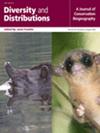Marginalising Time in Habitat Selection and Species Distribution Models Improves Inference
Abstract
Aim
Recent methodological advances for studying how animals move and use space with telemetry data have focused on fine-scale, more mechanistic inference. However, in many cases, researchers and managers remain interested in larger scale questions regarding species distribution and habitat use across study areas, landscapes, or seasonal ranges. Point processes offer a unified framework for many methods applied in studies of species distribution and resource selection; however, challenges remain in terms of dealing with temporal autocorrelation common in many types of telemetry data collected from animal locations.
Innovation
Space–time point processes (STPPs) have a unique property, in that marginalising time offers a connection between individual animal movement and broader point processes, yet this property has seen little attention in both statistical and applied research. In this paper, we first present some of the details of this marginalisation property and methods for applying marginalised STPPs (mSTTPs) to autocorrelated telemetry data and then apply a mSTTP in a case study on the summer space use and habitat selection of female caribou (Rangifer tarandus) in Denali National Park and Preserve, Alaska.
Main Conclusions
The case study demonstrated that an mSTPP approach can improve inference over other commonly used methods in terms of its ability to account for temporal autocorrelation and offers greater precision in parameter estimates and improved predictions of space use. As this method fits conveniently into the existing point process frameworks, it offers a practical solution to dealing with temporal autocorrelation inherent to many types of telemetry data when research questions center around broader scale patterns of animal habitat selection and space use.


 求助内容:
求助内容: 应助结果提醒方式:
应助结果提醒方式:


